Early Career Scientist Spotlight
Dr. Daniel da Silva (he/him)
Space Physicist
Solar Physics Laboratory (671)
What inspired you to pursue a career in Space Physics?
I didn’t originally intend to pursue space physics. My first intention was to be a computer scientist, and I spent many hours in high school reading books about programming languages like Lisp and Perl. When I first went to college at the University of Maryland, I majored in computer science. Through my course requirements, I was exposed to university mathematics, and after a few years, I got pulled into the elegance of rigorous mathematical reasoning and I changed my major to mathematics with a focus area in computer science. My favorite family of topics I studied during this time included discrete mathematics, which focuses on “discrete” structures such as integers, logical statements, graphs/networks, and mathematical sets. This is in contrast to traditional “continuous” calculus concepts like real numbers, derivatives, and integrals.
During college, I worked with NASA Goddard Space Flight Center as an undergraduate summer intern and, during that internship, I was asked to continue my research at Goddard part-time during the school year while I took classes. This was convenient because University of Maryland was 15 minutes down the road.
After I graduated with my BSc in Mathematics, I landed a job as a software engineer at Goddard. While working for several years at Goddard, I made many connections within the NASA community and I began to recognize the extensive worlds of science in which Goddard is involved. I was introduced to Goddard’s Heliophysics Science Division, which studies the Sun, the solar wind, and its interaction with planets’ magnetic fields. Because I wanted to learn as much as possible about these topics, I decided to go to graduate school. I completed my master’s degree, and I am currently pursuing a PhD, all while continuing my affiliation with Goddard.
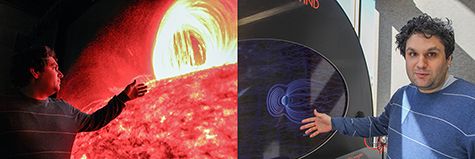
Credit: Antonya Huntenburg da Silva
Tell us about a project of yours that you are particularly excited about.
A research focus I have developed over the last couple years is data compression for satellite data. The amount of data collected by satellites has sharply increased in recent decades, mainly due to higher resolution instruments. Things have gotten to the point where some of the finest scientific instruments flown by NASA and the European Space Agency (ESA) only transmit a fraction of their data back to Earth solely because of limited bandwidth. But… what if we can transmit more scientific data using the same amount of bandwidth, simply by having smarter compression algorithms? This would be quite the bang for your buck.
Most data compression algorithms are designed around types of data. For instance, JPEG images work best with images (in particular, photography), MP3 works best with audio (in particular, speech and music), and AVC/H.264 works best with video (in particular, movies/television and streaming content). Sometimes, there are multiple applications of the same class of data, like images, where one algorithm works better for certain applications than for others. For example, PNG works better with images with few colors (like icons on websites), and JPEG works better for photographs (like pictures taken with a cell phone on Instagram).
NASA collects many types of data, including a diverse range of measurements like (a) multi-spectral imagery of the sun, (b) elevation maps of the polar ice caps, and (c) magnetic fields of planets and metallic asteroids. And that’s just the tip of the iceberg. What if we can create compression algorithms that are tailored for each type of data?
To tackle these problems, I use an assortment of image processing, scientific computing, and machine learning techniques. There has been a bit of a renaissance in data compression since the deep learning era, where people now use neural networks to do data compression. Through my research at Goddard (and in collaboration with West Virginia University), we have demonstrated that this approach works well with heliophysics satellite data. So far, between our teams we have demonstrated this with Ion Particle Flux measurements from the Magnetospheric MultiScale Mission (MMS) and EUV images of the Sun from the Solar Dynamics Observatory (SDO). Our results for the MMS mission can be found in our recently published work (da Silva et al., 2023).
What was your first big research achievement?
My first big research achievement was getting my first paper published. It was difficult going through the process for the first time, but I had so many great people helping me. You have to stomach all the uncertainty, submit your work, and see what happens! Many papers later, a lot of this uncertainty has dissolved, and publishing papers feels natural now.
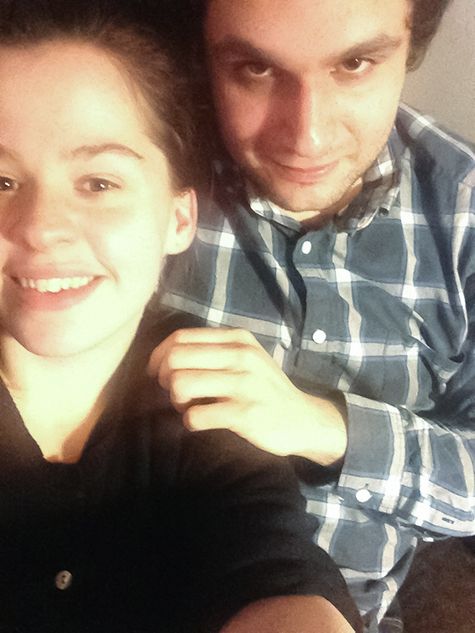
Credit: Antonya Huntenburg da Silva
What skills are most useful to you in your work, and how did you develop those skills?
When I was younger, people told me that learning to write was one of the most broadly applicable skills, and that no matter what career you chose, being able to write will help you. I think this is still true, but I also think the same thing is now true about the ability to write code. More than just “being good with computers”, in virtually every career where you sit at a desk, having basic coding abilities will make you more effective and allow you to adapt to new technical situations quickly. This is true whether you are writing a custom Excel Macro to save you and your co-workers a few hours or designing a complex software product to save your business.
To develop these skills, I read books, practiced with projects on my own, contributed to open source, and took classes.
What is one thing you wish everyone knew about your field of science?
It would be nice if more people knew what a plasma is. It’s hard to describe what we study in the magnetosphere, in the upper atmosphere, in the solar wind, and at the Sun without understanding what a plasma is. I think most people hear plasma and they think of science fiction, like a plasma gun in a first-person shooter video game or a laser weapon on a starfighter.
I also wish more people knew that interplanetary space isn’t completely empty! It’s funny how a lot of people know that the solar wind exists, but they also are under the impression that the space between the planets is 100% empty of matter. How can both be true?
What science question intrigues you the most?
I am fascinated by the relationship between emergent qualities of dynamical systems, especially when independent dynamical systems interact with each other and with an environment and yield collective behavior. For instance, the equations which define neural networks do not reveal the vast array of qualities networks may attain after training, especially when multiple networks are put in competing roles against each other. In a physics example, it is not immediately obvious that when the fluid equations are enforced at every point, they give rise to phenomena like vortices or turbulence. The human mind, which can be considered a biological dynamical system (and especially one which operates in a coupled state to others!), develops complex qualities at the individual and collective levels, as a result of relatively simple biological interactions.
At the end of the day, the overarching question is: Given a particular dynamical system (like a neural network, the fluid equations, or a human mind), can one predict its emergent qualities without simulation? This is a relatively simple problem to state, which requires profound philosophical redevelopment to strategically frame, and will probably only move at a trickling pace for centuries.
What do you like to do in your free time?
I have a lot of hobbies, including guitar, which I have played for over 20 years. In recent years, I have particularly become a fan of the early blues, including artists like Muddy Waters, Lightning Hopkins, T-Bone Walker, and Scrapper Blackwell. I enjoy listening to their music and then letting their style influence me when I improvise on my own.
I have also taken to collecting silly masks. They are fun to wear and there are few occasions that cannot be made better when one person enters the room in a silly mask.
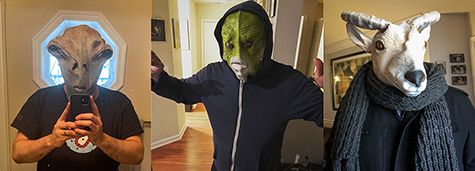
Credit: Daniel da Silva
I also like reading comic books and graphic novels, including the major publishers like Marvel but also secondary publishers like Image Comics and Dark Horse Comics. Many secondary publishers produce very novel and original works. My favorite comic book character is Marko from Saga.
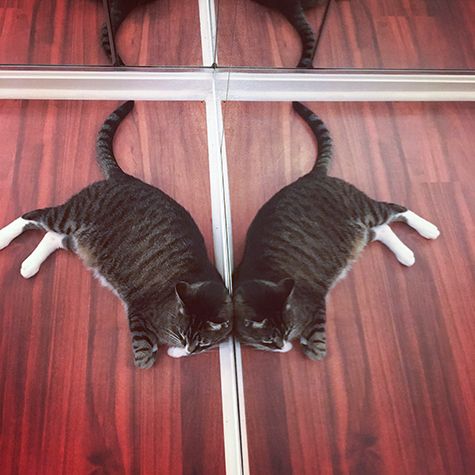
Credit: Daniel da Silva
Biography
Home Town:
Silver Spring, Maryland
Undergraduate Degree:
B.Sc Mathematics, University of Maryland, College Park; College Park, Maryland
Post-graduate Degrees:
M.Sc Space Systems Engineering, Johns Hopkins University; Baltimore, Maryland
Ph.D in Aerospace Engineering Sciences, University of Colorado, Boulder; Boulder, Colorado
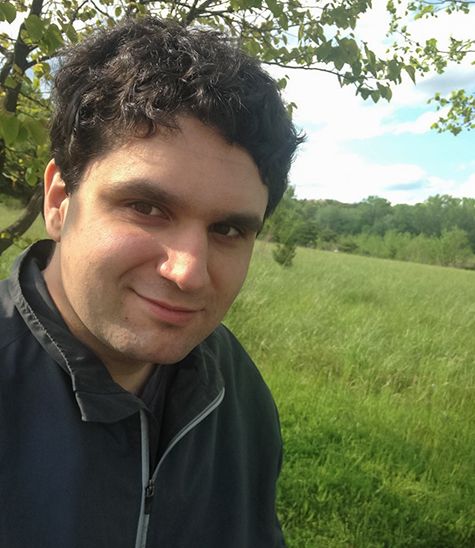
Link to Dr. da Silva's GSFC Bio
